Eleven airstrikes. 117 people dead. More than 70 children killed.
For five months in 2020, the Bureau's Shadow Wars team collaborated with Bellingcat, Al Jazeera and 150 volunteers to investigate a set of airstrikes that killed more than 100 civilians in Afghanistan. This collaboration built on previous investigations into strikes which had wiped out entire families. A series of articles and a documentary came out of the project; this page has been created to bring all of the findings together in one place.
This particular set of strikes was chosen from our database for this ambitious collaboration because they had some devastating features in common – all were reported to have hit buildings, and many were thought to have destroyed family homes. We had noticed an uptick in this kind of strikes and wanted to find out how many people had died, the impact of the strikes on survivors and if those survivors had any hope of justice.
Investigating on the ground in Afghanistan is dangerous and difficult, which historically has made it very hard to verify or challenge official military accounts, and as such near impossible for victims to see any accountability or justice. During an investigation into a strike that killed 11 members of the same family we had achieved a great deal of success uncovering the truth by using open source intelligence (OSINT) – using news reports, social media posts, photos from the strike site, satellite imagery and geolocation. We wanted to see how much we could find out about more strikes using these same techniques. We combined the information we gathered by OSINT with on-the-ground reporting where it was possible.
We were ultimately able to confirm 10 strikes on civilian homes which took place between June 2018 and June 2020. A total of 115 civilians were killed, of which more than 70 were children. We also confirmed one strike on a building housing an NGO which led to a further 2 civilian deaths. We know nine of these attacks were carried out by the US; we were unable to determine in the other two cases whether they were carried out by the US or Afghanistan.
Experts told us the body of evidence we gathered on the 10 strikes on civilian homes raised serious questions about the legality of US and Afghan military operations. All our findings are presented below.
Our story on ten of the strikes and why justice is so hard to come by in Afghanistan can be found here. For more on how we carried out the OSINT collaboration, read our story: Finding the faces of Afghanistan's slaughtered civilians. To meet the survivors of some of the strikes, watch Al Jazeera's Fault Lines documentary.
STRIKE 1: 14 civilians killed, including 7 children
- Date: July 19, 2018
- Type of strike: US airstrike
- Location: Chardara district, Kunduz province
- TBIJ database record: AFG495
Survivor testimony
Imamuddin told us he lost 14 members of his family when strikes hit their family compound. The Bureau partnered with Al Jazeera’s Fault Lines who visited the site in March 2020, seeing the damage for themselves and interviewing those who survived.
Other evidence
A UN investigation found that Afghan forces came under attack, responding with fire and mortars on the compound they believed the attack was coming from. A member of the family inside called a local police commander for help getting out. But before anything could be done, a US jet targeted the building. A second bomb then completely destroyed it. The UN concluded 14 civilians had died.
The New York Times had a list of those killed, provided by family members and verified by government officials and the Kunduz hospital, where 12 of the bodies were taken. The list included five women, seven children aged 2 to 14, and two men – a father and an uncle to the children.
Military account
In the aftermath, a US military spokesperson publicly claimed all those killed in the attack were legitimate military targets, although they did say they would investigate.
However this investigation concluded with the US military announcing on August 10 that after reviewing all “relevant and reasonably available” information, they found “no credible information to corroborate the allegations”.
The contradicted the Afghan government findings, which concluded that civilians had died in the incident, reversing earlier denials.
The reason for their findings, a US spokesperson told The New York Times, was that aerial video footage showed the incoming fire stopped once the bomb hit the two homes – which they said were the origin of the firing.
The spokesperson also said no Afghans had come forward to document any civilian deaths. When we informed them about a list given to The New York Times of the names of all 14 fatalities, US spokesperson Colonel O’Donnell said, “When we’re presented with any credible evidence, if something is provided to us we will take a look at it.”
To watch the Al Jazeera documentary click here. To see a full account of this strike and all the references, click here to go through to the entry in our database.
STRIKE 2: 12 civilians killed, including 11 children
- Date: September 23, 2018
- Type of strike: US airstrike
- Location: Jaghatu district, Wardak province
- TBIJ database record: AFG622
Survivor testimony
Masih Mubarez told us he was working in Iran when he got a phone call from his wife saying their village was under attack. He later learned from his brother that his house had been flattened, killing his wife, all seven children and four young nieces. He returned home and took photos of the rubble and of his family’s graves.
| Names | Ages |
|---|---|
| Mohammad Fayaz | 4 |
| Fahima | 5 |
| Samina | 7 |
| Mohammad Ilyas | 8 |
| Mohammad Wiqad | 10 |
| Amina | 10 |
| Safia | 12 |
| Zarifa | 12 |
| Anisa | 14 |
| Nafisa | 14 |
| Rahmania | 16 |
| Amina | 32 |
Other evidence
Metadata in the photos enabled us to obtain the coordinates of the house and the burial site. Satellite images proved the building had sustained damage consistent with a strike, and also showed the burial site. Both were only visible in satellite images after September 23.
Experts reviewed photos of weapons fragments left at the scene. A distinctive pattern of four bolts on a tail fin identified the use of a JDAM (a piece of missile kit that enables bombs to be guided by GPS). Only the US military have the capability to use this type of weapon in Afghanistan.
Military account
Shortly after the strike, a US spokesperson said they reviewed all operational material and found “no connections” between their actions and the claims of civilian casualties. In February they said they had no record of a strike in the area at all.
In June 2019, shortly before we published our story, the US admitted they had bombed Masih’s house. Days later, there was yet another statement. American soldiers had reported being fired on from the house, they said, and a strike had been carried out “in self-defence”. They still denied civilian casualties.
In December 2019, a US spokesperson told us that their investigation had concluded it was “possible, although unlikely, civilians died in the attack”. Masih was not interviewed as part of that investigations process.
A US report published in October 2018 showed there were 19 strikes carried out by US forces in the province on September 23. The report said the strikes destroyed “two tactical units, three structures, and one vehicle”.
To read the Bureau and The New York Times's full investigation of this strike, click here. Click here to go through to this case's entry in our database, which includes all accounts and references.
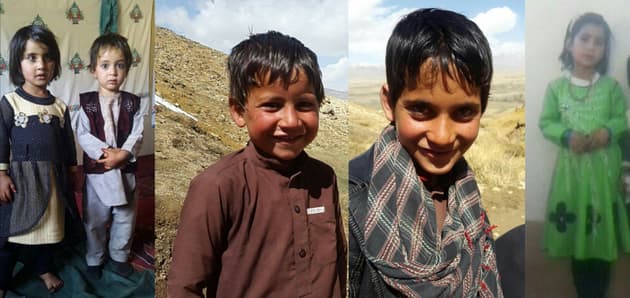 All seven of Masih's children, aged from 4 to 12 years old, were killed in the strike,
All seven of Masih's children, aged from 4 to 12 years old, were killed in the strike,
STRIKE 3: 2 civilians killed, including 1 child
13 civilians injured, including 10 children
- Date: November 24, 2018
- Type of strike: US airstrike
- Location: Nad Ali district, Helmand province
- TBIJ database record: AFG959
Survivor testimony
We interviewed the Ishaqzai family, who told us they lost two family members, including a child, in a strike on their home. Thirteen others were injured. They say Taliban fighters ran into their compound and fired at a convoy of soldiers. A US strike was then called in, hitting the house after the insurgents had left.
Other evidence
We worked with a photographer who was present at the hospital when the injured family members arrived, gathering photographic evidence of the harm. Some of the injuries were life changing, with one 14-year-old boy left blind.
Military account
“We know US forces, accompanying their Afghan security partners, called in self-defence air support against a building from which the Taliban were shooting,” a US military spokesperson told the Bureau. “Too often the Taliban use civilians as hostages and human shields.”
The US military later admitted that four civilians were injured in a strike in Helmand on this day in their annual report on civilian casualties. This is a significant undercount compared to our findings, with many of the injured shown in photos.
To read our full investigation of this strike published in partnership with the Daily Beast, click here. Click here to go through to this case's entry in our database, which includes all accounts and references.
STRIKE 4: 23 civilians killed, including 10 children
- Date: November 27, 2018
- Type of strike: US airstrike
- Location: Zanziri Daryab, Garamser district, Helmand province
- TBIJ database record: AFG981
Survivor testimony
A relative of the victims and an eyewitness told UNAMA that a strike hit his brother's family home at around 10pm that night.
Other evidence
The UNAMA report concluded that 23 civilians died in the strike, including 10 children. US military confirmed to us that civilians had died, but gave a significantly lower death toll. Local officials also spoke to media confirming civilians died in a strike, although death tolls varied.
Military account
The US responded to the initial reports saying that Taliban fighters had fired from a compound and a strike was called in in self-defence. After the strike they said there were secondary explosions, which they assessed as being from explosives inside that compound.
The US military later admitted that this strike killed 14 civilians and injured three others in their annual report on civilian casualties.
To read the full testimony of the survivor, click here. For all information relating to this case, including references, click here to go through to our database.
STRIKE 5: 12 civilians killed, including 5 children
- Date: August 31/September 1, 2019
- Type of strike: US or Afghan strike
- Location: Gurziwan district, Faryab province
- TBIJ database record: AFG2780C
Survivor testimony
Bismillah Khan told us that he lost 12 members of his family in strikes carried out in the early hours of September 1. All three homes in the family's compound were destroyed.
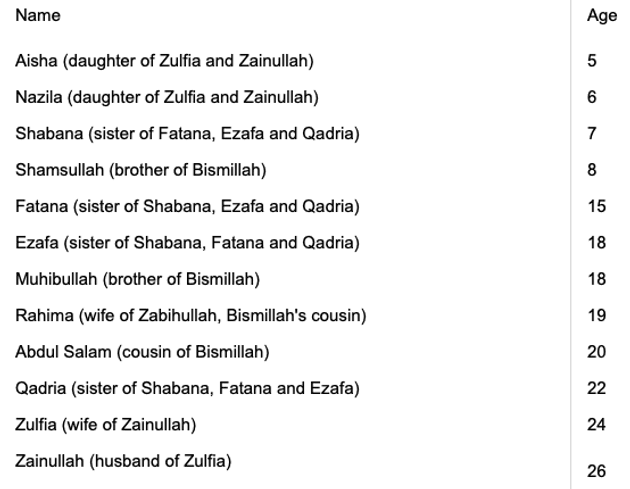 A list of family members killed provided by Bismillah Khan
A list of family members killed provided by Bismillah Khan
Other evidence
We used photos and videos showing the aftermath of this strike to geolocate the compound hit. Recent satellite imagery proved the building had sustained extensive damage. Photos given to us by Bismillah of the site post-strike further verified this.
Military response
Neither militaries accepted responsibility for the strike.
An email from the US military said that no American strikes had hit the area in question within 72 hours of the date of the attack.
The Afghan military meanwhile announced that 47 Taliban fighters had been killed, but did not reply to requests for comment and rejected allegations that civilians had been harmed.
This family's story was spotlighted in our investigation into strikes on houses, which can be found here. For a more comprehensive account, including all references, click here to go through to this case's entry in our database.
STRIKE 6: 5-21 civilians killed, including 5 children
- Date: February 8, 2019
- Type of strike: US airstrike
- Location: Sangin district, Helmand
- TBIJ database record: AFG1344
Survivor testimony
Our findings indicate at least five children were killed when two civilian homes were hit by strikes. One woman, who survived the attack but lost two of her children, gave a detailed account of that night to UNAMA which can be found here. We also interviewed a villager who said who they had lost members of their family, and we cross-referenced the two accounts.
The total number of civilians killed in that attack is likely higher, with officials estimating up to 21 dead, but we could only independently verify the five child casualties.
Other evidence
The New York Times also spoke to a relative of one of the families affected. Their account corresponded with the one provided by the survivor to the UN. Local officials also confirmed civilians had died in strikes in the area, but gave differing figures.
Military response
The US military initially confirmed carrying out strikes in the area. A spokesperson said a joint team of Afghan and American commandos had conducted an operation targeting a Taliban operations center in Sangin. Airstrikes were then called in after a Taliban insurgent fired at Afghan and American forces from a structure in a civilian area.
But in January 2020, a spokesperson told the Bureau that the allegations of civilian harm had been “disproved” and the case closed.
US military data does shows seven strikes hit Helmand on this day.
To see the survivor testimony, click here. For a full account of all information relating to this case, click here to go through to our database.
STRIKE 7: 15 civilians killed, including 10 children
5 civilians injured
- Date: January 24, 2019
- Type of strike: US airstrike
- Location: Sangin district, Helmand province
- TBIJ database record: AFG1291
Survivor testimony
A UN report included a testimony from a 30-year-old survivor of the attack. She said that strikes hit while everyone was sleeping. She lost five of her children in the attack.
Other evidence
At the same time the UN was investigating, we were examining a large quantity of visual evidence being shared online. This included a video showing the bodies of the alleged victims, in which at least eight children were visible. This video was taken after the bodies were removed from the strike site. There were also photos of children's bodies at the site.
The UN report included more details on the events of the night, and ultimately concluded that 15 civilians had died. US forces launched two strikes on the house on the night of 23-24 January 2019, at approximately 9pm.
The first hit a room where one of the families were sleeping. A second airstrike hit areas where other family members were hiding. The US confirmed the casualty figures following a formal investigation into the incident.
Military response
A US military investigation found that 15 civilians had been killed in the strikes. They said the attack was launched as Taliban fighters were firing from a residential home. The results of the investigation were not known until February 2020, when the UN report was released.
To see the survivor testimony, click here. For a full account of all information relating to this case, click here.
STRIKE 8: 12 civilians killed, including 9 children
- Date: March 9, 2019
- Type of strike: US airstrike
- Location: Hesarak district, Nangarhar province
- TBIJ database record: AFG1455
Survivor testimony
Waheeda, 14, and her uncle Sherif Khan told us that they lost 12 members of their family, including nine children, when strikes hit their family compound at around 11pm at night. The Bureau partnered with Al Jazeera’s Fault Lines who travelled to Afghanistan to meet them in March 2020.
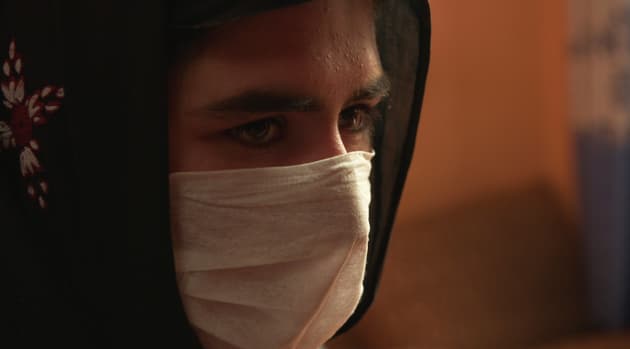 Waheeda, 14, was orphaned in the strike
Waheeda, 14, was orphaned in the strike
Other evidence
During our search for evidence being shared online, we uncovered images of bodies, a eulogy for the doctor and a Taliban video showing the alleged strike site.
One contributor was able to use that information to identify a likely location of the strike, with low resolution satellite imagery seeming to prove it suffered damage sometime between March 5 and March 13. See a full breakdown of those findings here.
Military response
The allegations of civilian harm were deemed just “possible” by the US military in January 2020, and the investigation was closed. In an earlier statement the US military said the strikes were carried out “self-defence”.
As of March 2020, the family say they have not been contacted by the US military.
To see the interviews with the family, watch the Al Jazeera documentary here. For a full account of all information relating to this case, click here to reach this entry in our database.
STRIKE 9: 13-14 civilians killed, including 10 children
- Date: March 23, 2019
- Type of strike: US airstrike
- Location: Telawka neighbourhood, Gul Tepa district, Kunduz province
- TBIJ database record: AFG1511
Evidence
UN reports, news reporting, and our own findings indicated that 13 civilians, including ten children, were killed. We had uncovered numerous photos of dead children in the rubble of a house.
The US military confirmed this death toll to the Bureau in January 2020.
To see a full account of all the information we have on this strike, see the entry in our database by clicking here.
STRIKE 10: 7 civilians killed, including 6 children
- Date: 9 July, 2019
- Type of strike: US or Afghan strike
- Location: KutobKhel district, Pul e Khumri, Baghlan province
- TBIJ strike database: AFG2298C
Survivor testimony
Ismael Khan told us how a strike hit his home while he was sleeping on the terrace. He awoke in hospital to the news that his wife and six of his children had been killed.
| Name | Age |
|---|---|
| Sanaullah | 2 |
| Nazmeena | 7 |
| Ruqia | 9 |
| Shirullah | 10 |
| Bakhtullah | 12 |
| Khairullah | 15 |
| Naseema (mother of above six children) | 30 (approximately) |
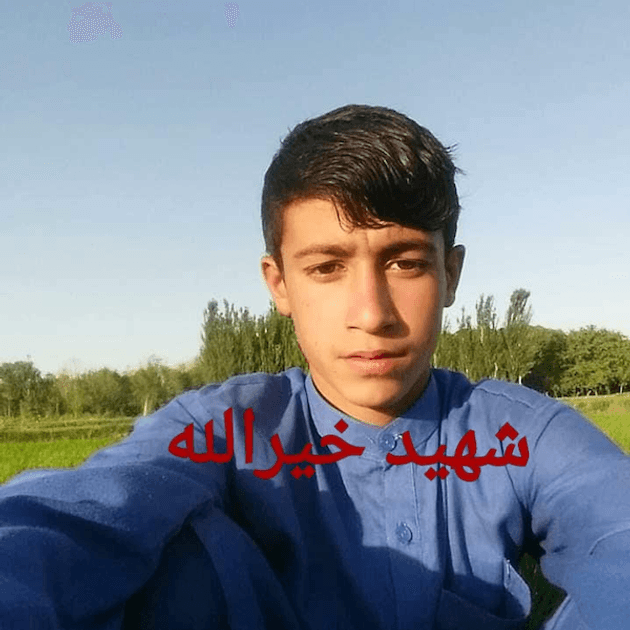 Khairullah, 15, was the oldest of Ismael and Naseema's six children
Khairullah, 15, was the oldest of Ismael and Naseema's six children
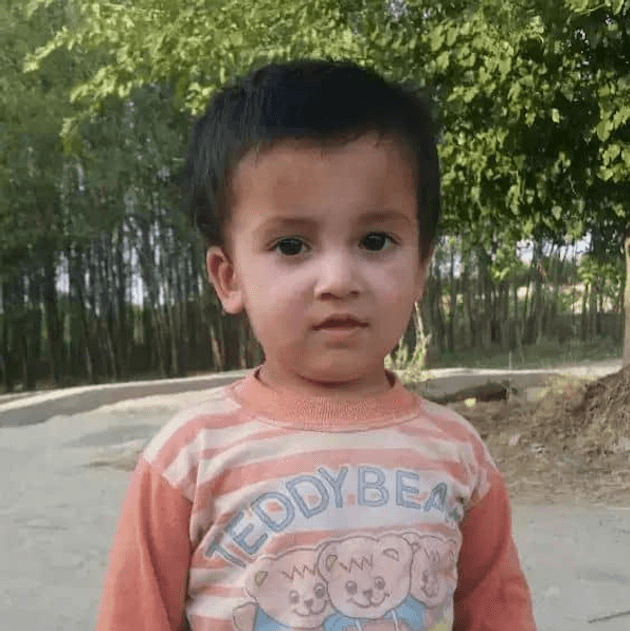 Sanaullah, 2, was the youngest
Sanaullah, 2, was the youngest
Other evidence
We were able to geolocate the compound hit. While we were unable to access satellite imagery immediately after the attack, we did get imagery proving significant structural change had occurred.
We were also able to compare the photos of his children alive, provided by Ismael, with the footage we had found showing the bodies, finding there were clear matches with some of the children.
We approached the province’s hospital director who had been in touch with Ismael, and confirmed the family’s tragedy.
Military response
It is not clear which military conducted the strike. The Afghan Ministry of Defence had reportedly admitted that civilians had died, but seemed to stop short of accepting responsibility.
The US military meanwhile denied carrying out any strikes in the area. This contradicted a statement given by the provincial governor on camera blaming NATO forces at a funeral.
A detailed investigation into what we found in this case can be found by clicking here. A more technical version is also here. You can see all information, including references, in our database here.
Strike 11: 2 civilians killed
- Date: May 24, 2019
- Type of strike: US airstrike
- Location: Shib Koh, Farah province
- TBIJ database record: AFG1893
Survivor testimony
We spoke to Haji Malik, the provincial director of an NGO who confirmed that a building housing their offices had been hit by a strike at around 1.20am on May 24. Abdul Hamid and Abdul Rahim Jan, two employees, were killed. We also spoke with Abdul Jan's brother who confirmed his death.
Other evidence
The New York Times had included this incident in one of their monthly Afghan updates. We also uncovered evidence shared online, including a eulogy post on Facebook which led us to the family of Abdul Hamid. Other online evidence helped us identify the NGO.
Military response
The US military told the Bureau in January 2020 that the allegations of civilian harm from this incident were deemed “possible”, and the case now closed.
But Malik says no one from the US military had contacted the charity, and, he said, no compensation had been paid to the families.
In their monthly release of strike data, US Forces-Afghanistan admitted one strike in Farah province on this day.
You can find more about this incident by reading this story here, published in partnership with Wired. You can see all information, including references, in our database.
--------------------------
In the following cases we were not able to confirm either the strike or whether civilians were killed or injured, but we did uncover additional information.
STRIKE 12: Up to 10 civilians killed
Date: July 19,2019
Type of strike: Possible strike
Location: Du Juee area, Bala Murghab district, Badghis province
TBIJ database record: AFG2372C
Evidence
In this case, we found photos and a video showing alleged victims of the attack, including two children, being shared on Twitter. There were also images of a destroyed house.
We have not been able to verify the social media posts as yet, although the images appeared to have been shared only after the date of attack, making it more likely they are linked to this incident.
Two news reports (AP and Azamm) and a Taliban statement indicate that there were two strikes that led to civilians being killed in the area.
Military response
A response from the US military stated: “The Afghan Ministry of Defence conducted an investigation into the allegations, finding that all killed in the strike were Taliban combatants.”
US Forces-Afghanistan did not report any strikes in Badghis on this day in their monthly release of strike data.
STRIKE 13: Up to 8 civilians reported killed, including up to 4 children
Date: September 7, 2019
Type of strike: Possible strike
Location: Sufi Zaman, Dasht-e-Archi District, Kunduz province
TBIJ database record: AFG2870
Evidence
The New York Times reported that eight civilians (six men and two women) were killed in strike that hit a house.
We uncovered photos of the alleged victims, which showed the bodies of four children. We also found photos and a video of the alleged strike site.
All of these came from Taliban sources, which also alleged eight civilian deaths, although they claim four women and four children were killed. We have not yet been able to the information shared by these sources.
Military response
In October, the a US spokesperson responded to the allegations, saying: “Coalition forces conducted a correlating airstrike on Sept. 7, 2019, and became aware of civilian casualty claims. Upon further review, the reports were found not credible The allegations we reviewed claimed a structure was struck, however the nearest Coalition forces structure airstrike was more than 20 kilometers away from the alleged strike location.”
STRIKE 14: Up to 8 civilians reported killed, including up to 4 children
Date: December 23/24,2019
Type of strike: Possible strike
Location: Dara e Afghani village, Nijrab district, central Kapisa province
TBIJ database record: AFG3866C
Evidence
In this case we found a Taliban video showing a detailed view of the alleged strike site, which matched an image attached to a Tolo news report on the incident. One contributor used this to narrow down the location, finding a possible geolocation match. We are awaiting satellite recent imagery to confirm.
This video also included images of children’s bodies, which had appeared on Twitter shared by pro-Taliban accounts. Across all the tweets, the bodies of 4-5 boys were shown.
However, there are certain details that call into question the authenticity of the photos of the bodies, including floral garlands around the boys’ necks. These garlands are extremely similar to the ones given during a graduation ceremony at a madrassa that was bombed by the Afghan airforce in April 2018. These garlands adorned the bodies of many of those killed in the attack.
Military response
US Forces-Afghanistan did not record strikes in Kapisa on December 24, but did on December 23 in their monthly release of strike data.
STRIKE 15: Up to 13 civilians reported killed
Date: April 2, 2019
Type of strike: Possible strike
Location: Uruzgan province
TBIJ database record: AFG1559
Evidence
Local officials claimed that between 10 and 13 civilians were killed when a US airstrike struck a hotel on the Uruzgan-Kandahar highway, according to The New York Times.
In this case we numerous found images of those allegedly killed as a result of the strike. We did manage to connect to a hospital director who confirmed receiving 13 male bodies but was vague on their civilian status. This means we cannot confirm whether the dead were civilians or not.
Military response
The response from the US military has been somewhat confusing. On July 22, a spokesperson for Resolute Support told the Bureau in a phone call that this incident is still under investigation.
However in January 2020, they said they had no record of an allegation on this date and location. There was a closed allegation from a UNAMA case on 10 April, a spokesperson said.
Header image: Young victims of an airstrike in hospital. Credit: Andrew Quilty/TBIJ
Our Shadow Wars project was funded by the Open Society Foundation and the Joseph Rowntree Charitable Trust. None of our funders have any influence over the Bureau’s editorial decisions or output.





